The stunning, upright growing, Zebra Plant (Calathea Zebrina) grows to about two feet tall. The gorgeous striped foliage provides a lovely focal point for your home. This is a fussy girl. Calathea Zebrina plant care is particular. Read our plant care guide to learn all about the Zebrina.
The colors of this Calathea are intensely beautiful. The striping colors are almost surreal with a definite tropical feel.
The Zebrina originates in the tropical rain forests of Brazil. Can’t you just imagine this plant showing off its exotic stripes and colors under the tree canopy?
Unlike some of our other favorite tropical plants, The Zebra plant doesn’t climb trees. Calatheas grow right down on the forest floor. And they stay put in the warm humid jungle.
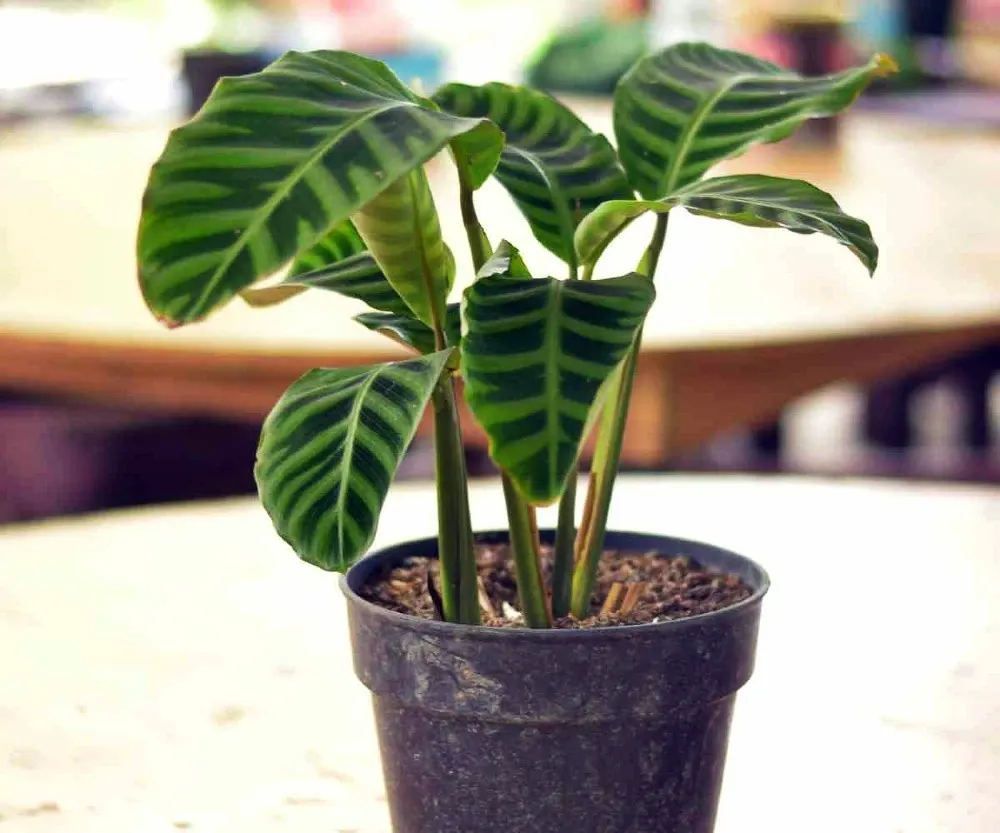
Calathea Zebrina care takes some learning and experimenting. They do not forgive our mistakes. It’s the price of loving Calatheas. They want what they want.
Our job is to figure out how to give them the environment they require to grow trouble free. Once you do they will flourish in your care.
All Calathea plants are non toxic to humans and pets. The Zebrina is an air filtering plant capable of improving your home environment.
Shop the Calathea Zebrina on Etsy
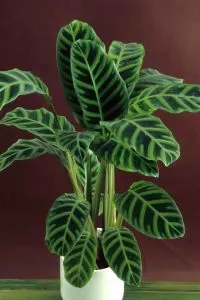
This care guide will go over all the details of keeping these finicky plants healthy and showing off to best advantage. If you make a mistake the leaves will show you so keep an eye out for burning and crisp leaf edges, drooping, or yellowing.
This is the language of plants. Happy plants have energy, color and life coursing through them. They make us happy. Here is how to keep your Zebrina beautiful.
Calathea Zebrina Plant Care Guide
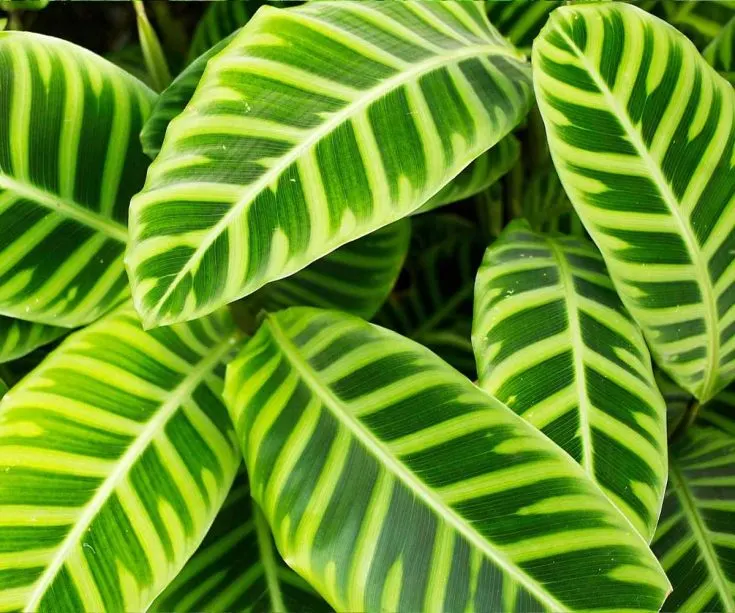
Calatheas Zebinas are beautiful, exotic plants with lovely striping. Their care needs are specific and important. They are sensitive. This is Not a forgiving plant.
Once you find the perfect growing conditions for your calathea Zebrina it will perform well for you.
Learn what they need and give it to them. Their lovely foliage is so worth the effort!
All Calathea plant care is similar. No matter what type you own this care guide will apply.
Materials
Tools
Instructions
Soil Preference:
- Calatheas enjoy a light well draining soil.
- A mix of potting soil and perlite and peat or coir will keep the roots happiest.
- Our mix for this plant is 30 % potting mix, 30% succulent soil or coir and 30% perlite or pumas.
- A heavy soil potting mix is not recommended for these plants.
Pot Size and Type:
- Calatheas grow from rhizomes. And they grow new offshoots to the sides of the mother plant.
- This means they will fill a pot out as a wider plant eventually. Quite a nice table top centerpiece.
- Calatheas will grow to the size of the pot with one or more rhizomes. If you leave it to grow as a grouping of rhizomes in one pot you will need to find a pot that has a wider circumference. They do not like to be overly root bound.
- If you want to encourage faster growth choose a pot about 2 inches wider in diameter than the current pot.
- Use a well drained ceramic or plastic pot. It MUST have excellent drainage.
- Terra cotta pots are not recommended. They will wick too much water away from the soil.
- Repot every second year or when roots come out the drainage holes on the pot bottom To the next pot size up.
- Don't jump to a huge pot from a small one unless you wish to encourage faster growth. Just go to the next size up pot. A Too large pot with too much constantly moist soil will encourage root rot.
- For Calatheas self watering pot systems work well. (linked above). They control the watering for you and help avoid root rot, overwatering and under watering.
Lighting: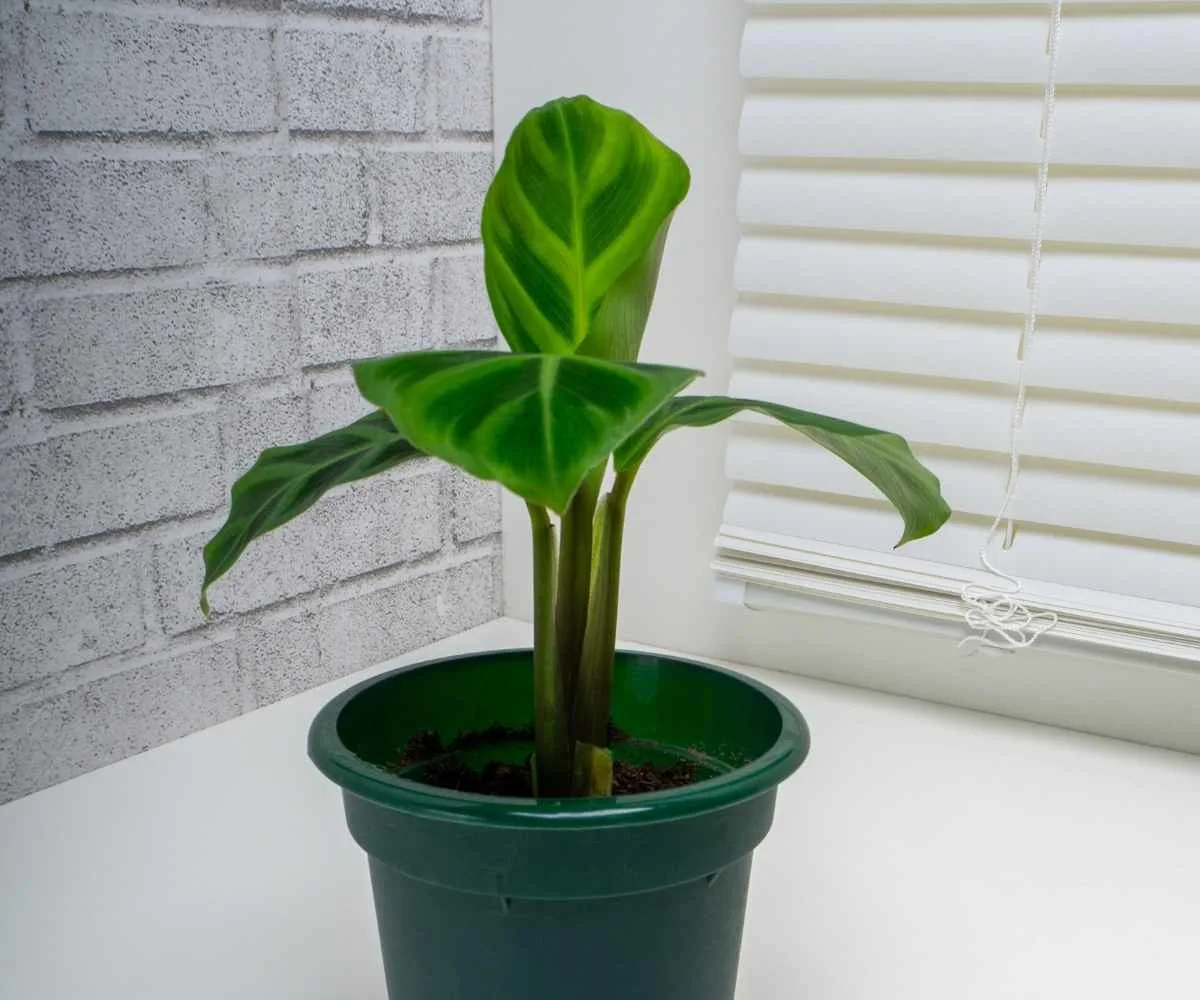
- Calathea Zebrina enjoys indirect light for best leaf variegation and optimal growth.
- If the leaves fade move to a less bright area and see if that helps. Too much light can also fade the leaves and crisp the leaf edge.
- It will tolerate lower indirect light but the plant may grow more slowly. Leaf variegations may not be well expressed.
- Shield the plant from strong direct light in summer south and west sunny windows. The leaves will burn and the colors will fade. Look for dry brown spots on the leaves and curling brown edges. If you see them move the plant to lower light.
- Tip: Window sheers or blinds can offset some brief periods of high direct light.
Watering:
- Your Calathea Zebrina is VERY sensitive to the water you use. These plants love low mineral, soft acid water between 5.5 and 6 Ph. Hard water high in minerals and salts will burn the leaves.
- Collect rain water or use Filtered or distilled water to prevent problems with minerals and PH.
- Water your Zebra plant when the soil is dry down an inch or so. Calatheas enjoy even moisture in the soil. But never let it sit in soaking wet potting mix.
- Be sure to use your moisture meter every couple of days and especially before watering. The dial should read moist when pushed down to the bottom of the root system. If the meter reads dry you need to water. But if it reads wet WAIT. This is important. Calatheas are sensitive to root rot. Do not overwater!
- Calatheas enjoy evenly moist soil.
Watering Problems:
- If your calathea leaves start to roll up and curl, the plant droops or the edges turn brown suspect watering problems.
- Under watering can show all the symptoms listed above but most often causes leaf edges rolling up, brown tips and crisping. Adjust your watering or soil mix to accommodate.
- Over watering will end in root rot, grey mold on the leaves, algae growth on the soil and fungus gnats or other pests moving in.
- Try a watering schedule of once a week. But do not water if the soil is wet. Alternately, Do not let the soil dry out completely.
- Watering is best done on a regular schedule with a moisture meter check so the plant is not over or under watered. Both can cause stress.
- These tropical plant enjoy humidity of 40 to 60%. Use a hygrometer next to your calathea to make sure you have enough humidity for them.
- Never let this plant get wet feet. If the soil is compacted the bottom of the soil can remain wet which encourages, grey mold on the leaves, root rot and Fungus Gnats. If you see yellow leaves or leaf tips you are probably overwatering or Inconsistently watering.
- In dormant winter months reduce watering to when the soil is dry down 2 inches .
Humidity Tips:
- Calatheas are happy at 40 to 60% humidity. Although they can tolerate higher, do not let it drop under 40%.
- I use an inexpensive hygrometer to monitor the room temperature and humidity levels near mine. It is cheap and so helpful!
- In dry climates this plant will thrive with a humidifier nearby. Or set it in your kitchen or bathroom.
- Frequent misting on a regular daily schedule will help.
- Set the Calathea plant on a pebble tray with water not touching the pot bottom for added humidity as necessary.
- Grouping plants together will also provide more humid conditions as they respire and evaporate.
How to Fertilize:
- Calatheas require a regular fertilizing schedule. BUT, they are susceptible to fertilizer burn.
- Apply a good quality fertilizer (linked in materials) monthly through Spring and summer at half dose. If you see burn marks on the plant leaves reduce fertilizer by half again.
- Decrease feedings by late Fall and allow your Calathea plant to rest through the winter months.
- Look for brown spots on the leaves of your plants. This may indicate an over concentration of salts in the roots from over feeding. It can burn the leaves.
- The remedy is to set the plant under a faucet of water and let the water run through for 10 minutes or so. Allow the pot to Completely drain. Discontinue fertilizer until the plant recovers.
Temperature:
- Optimal temperatures for Calathea Zebrina are 65 degrees F. to 75 degrees F.
- Calatheas are sensitive to cold drafts from windows and doors.
- In winter, beware heat vents blowing on your plant leaves. Calatheas cannot tolerate uneven heating, or drying heat vents or drafts.
Pruning and Training:
- Sharp sterile Hand pruners or sharp scissors are preferred for pruning. They will give a clean cut that will heal quickly.
- Pruning is usually done to shape the plant or cut off unsightly leaves.
- Calatheas grow wider rather than taller with time. The Zebrina grows to about 24 inches high. This makes them ideal table top or window sill plants.
Leaf Care:
- For the best care your Zebra plant leaves enjoy occasional washing.
- This helps keep the stomata (leaf pores) open for plant respiration.
- Healthy leaves with a good clean surface are most able to resist pests. Neem oil leaf shine and water is a good choice for leaf washing.
- Dusty leaves will starve the plants of water exchange through humidity.
- Hand Wash the leaves monthly with water and neem oil.
- You can also use a shower to clean off a calathea. Beware the water temperature. Keep it room temperature to avoid shocking the plant.
Pests:
- All plants get attacked by pests. Calatheas are especially susceptible to spider mites.
- Stress by longterm poor watering practices, poor light, extreme temperatures and soil conditions are contributors to pests. Fungus gnats will set up house in the soggy soil of an overwatered plant.
- Washing the plant leaves occasionally with neem oil leaf shine will help keep pests from establishing themselves on the plant.
- Spider mites are the biggest problem for Calathea plants. Watch for the webs. Treat immediately and continue for two weeks or more to remove the next generation of spider mites after the adults die. Eggs attach to the leaves and cannot be washed off easily.
- Mealy bugs, scale, thrips and whitefly are also common houseplant pests you will see in a stressed Calathea.
- Read our post on How to get rid of aphids and other pests with our homemade pesticide soap recipe or neems oil.
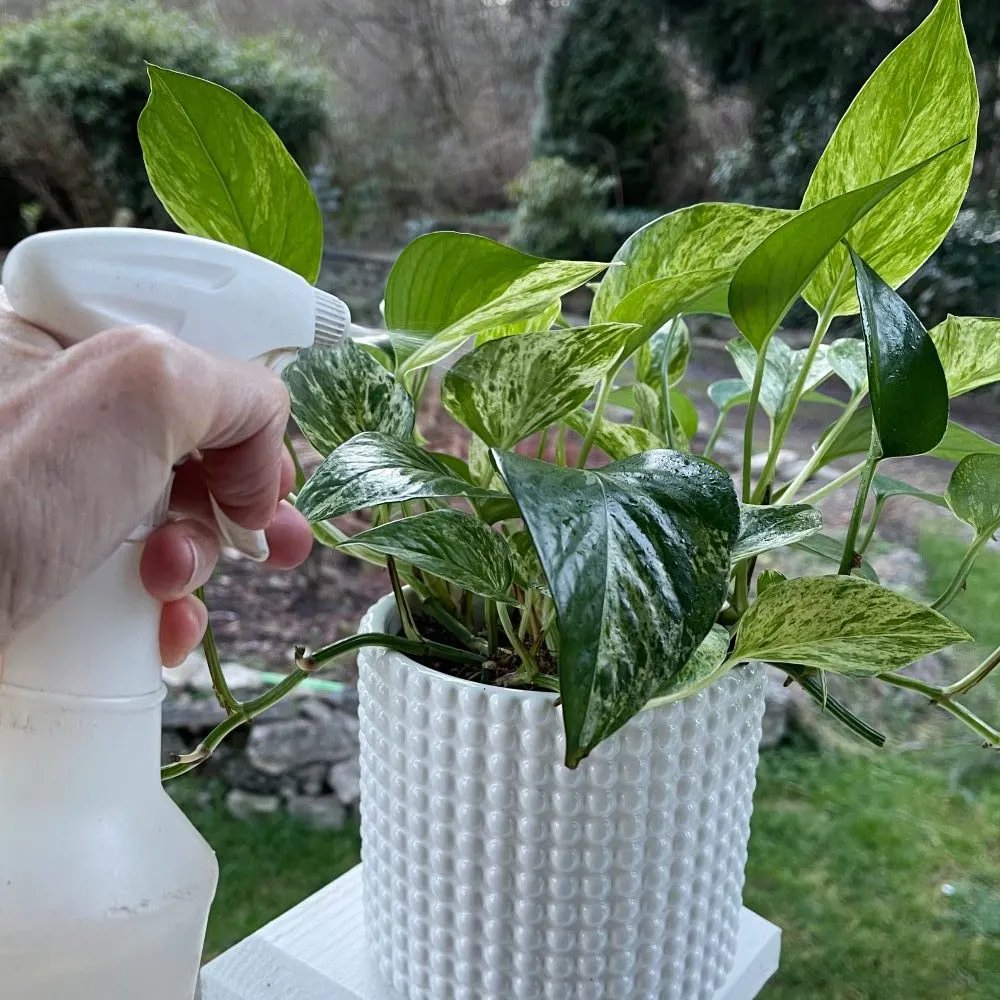
- To minimize the possibility of pests be sure to check all nursery plants before bringing them home. Carefully examine the top and bottom of the leaves.
- Do NOT purchase plants with signs of pest damage or disease.
- Quarantine all new plants until you are sure no pests live in them.
How to Propagate Calatheas:
- Propagation is best done through root division.
- Seed propagation can be done but the seeds can be difficult to source.
- Dividing a calathea is easiest when repotting it in spring or summer.
- Unpot the plant gently. Look at the root system. If the plant is mature you should see a natural parting in the leaves and roots. This is the two plants growing together.
- Gently pull the two parts to separate them. If the roots are heavily intertwined cut them as necessary with sharp sterile scissors or small pruners.
Pot the two plant sections in separate pots. In 2 to 4 weeks the divisions should be settled and growing.
Non Toxic Plant:
- All calatheas are non toxic to humans and pets. Still it is not recommended to chew any houseplant.
- Biting or swatting are not good for the health of the plant.
- Also you don't know what chemicals or pathogens are in the soil or fertilizers you use. So best practice is to keep houseplants away from pets and kids.
Notes
The video below is relevant to the care of all calatheas:
More Lovely Calatheas:
Calatheas are some of the most eye catching plants you can invite into your home. There is a variety to please almost any plant lover with their gorgeous foliages.
Weather you are drawn to the pin striped Ornata varieties, the Orbifolia or the pink colors on all the Roseopticas, Calatheas make a showy presence in any room of your home. Find them a perfect place and enjoy.
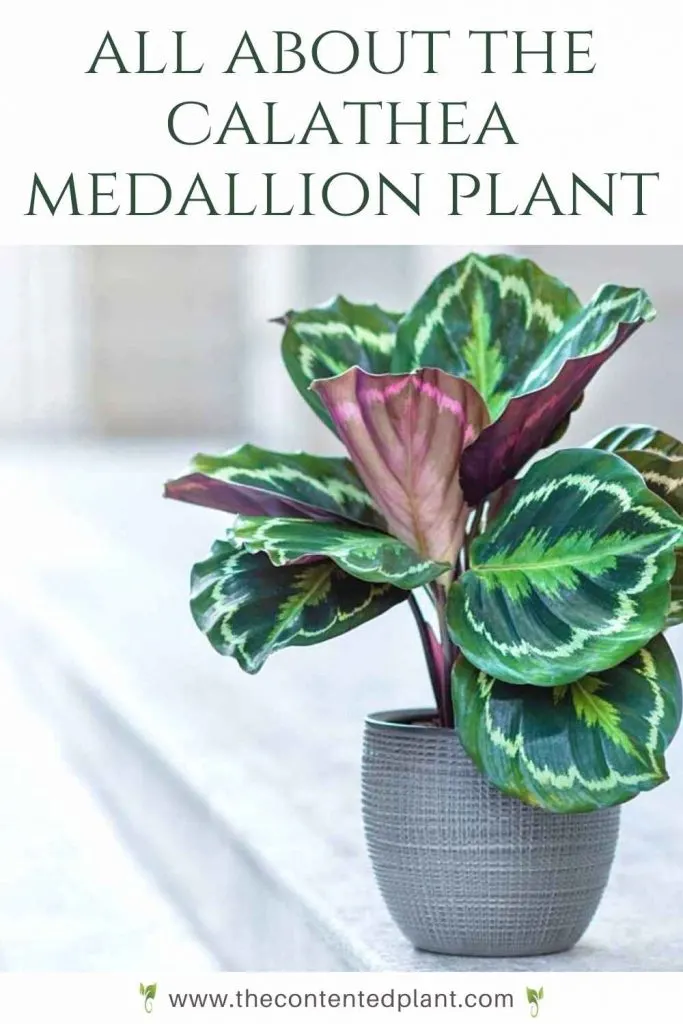
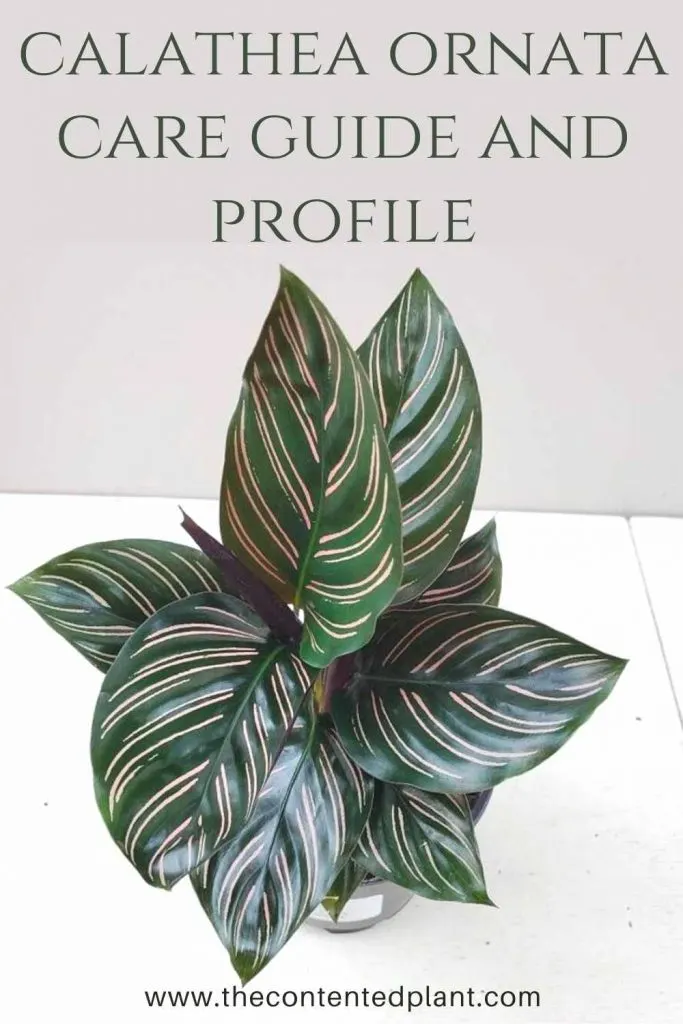
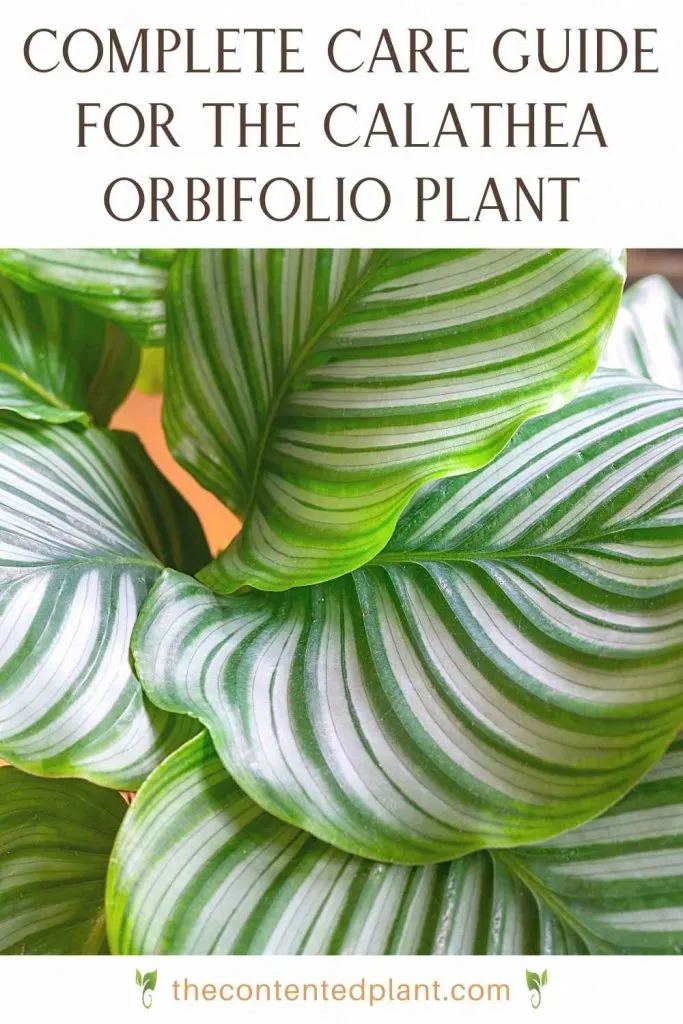
Follow Us:
Find us on YouTube, Instagram , Pinterest and TikTok! We love to Plant chat. We also comment, like and occasionally share your content to our daily stories. We’d love to see your plants. Share your joy in your houseplants. Happy Planting!
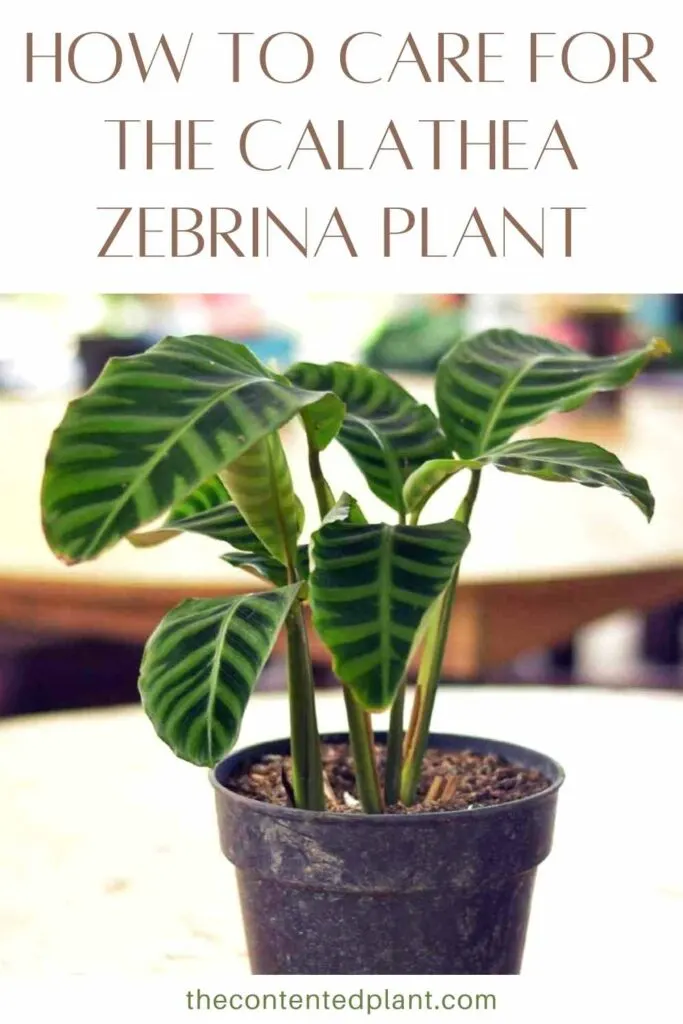

Anthurium Plant Care Guide - The Contented Plant
Wednesday 18th of May 2022
[…] more air filtering plant choices. Visit our posts on Calathea Zebrina, Elephant Ear plant, and these three pothos […]
Snake Plant Care Guide-Sansevieria - The Contented Plant
Friday 22nd of April 2022
[…] for something a bit more splashy? Try the Zebrina! She a bit more work. But work every bit of […]
Non Toxic Plants for Cats, Dogs and Kids - The Contented Plant
Tuesday 24th of August 2021
[…] variegated string of hearts, and the Calathea Zebra plant are recent additions to our non toxic plants with care guides for […]